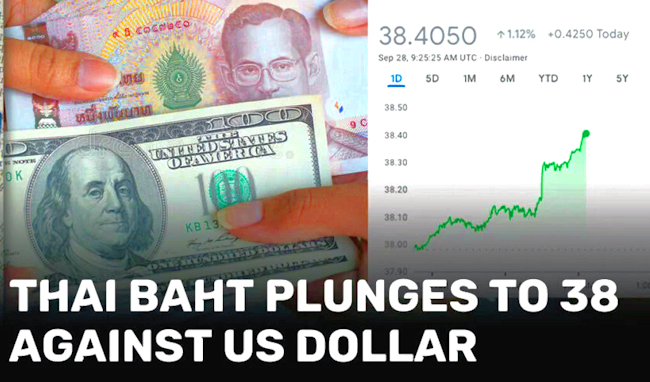The volatile Thai baht has depreciated to 38 against the US dollar even faster than foreseen by economists. The last time the baht reached 38 to the dollar was 16 years and two months ago on July 26, 2006.
The baht’s depreciation is attributed to the rising strength of the US dollar. The dollar index has risen to 114, causing several currencies worldwide to depreciate. The US dollar continues to grow in value due to continued federal fund hikes.
Amid pressure from high inflation rates and the depreciating baht, Thailand’s Monetary Policy Committee will meet today to discuss raising the policy rate from 0.75% to 1%. The policy rate hike will increase interest rates between Thailand and the US with the goal of temporarily strengthening the baht and “supporting economic recovery.”
Though there might be a silver lining to Thailand’s weakening baht for the tourism industry. The president of the Thai Hotels Association (THA) says the weakening baht is one of several factors making Thai tourism more attractive in post-pandemic times.
THA president Marissa Nunbhakdi says that now the ‘Test & Go’ and ‘Thailand Pass’ schemes have been scrapped, momentum has built up for reopening borders. She said the weak baht could help the tourism industry since tourists can spend more money in Thailand now.
Marissa noted, however, that she is not sure whether the weak baht will help offset high transportation costs. She said the spike in airfares has impacted the number of foreign tourists flying to the kingdom. Marissa said this market has remained lower than expected during the past few months.
According to the Thai government, more than five million foreign tourists arrived in the ‘Land of Smiles’ between January 1 and September 8. The total number of foreign visitors was 5,018,172, said spokesman Thanakorn Wangboonkongchana.
The Tourism Authority of Thailand estimated that the number of tourists would reach 10 million, based on advanced flights and hotel bookings for the next three months.


